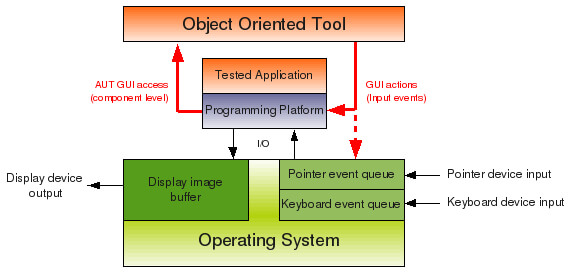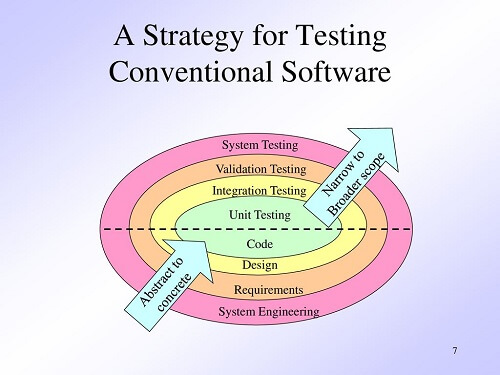Difference between Object-Oriented Testing and Conventional TestingThis article will provide you a detailed comparison between Object-oriented testing and Conventional Testing. Let's start with the brief introduction of object-oriented testing. What is Object-Oriented Testing?Object-oriented testing is a type of software testing that focuses on verifying the behaviour of individual objects or classes in an object-oriented system. The goal of object-oriented testing is to ensure that each object or class in the system performs its functions correctly and interacts properly with other objects or classes. 
Object-oriented programming emphasises the use of objects and classes to organise and structure software, and object-oriented testing is built on these ideas. In object-oriented testing, the behaviour of an object or class is tested by creating test cases that simulate different scenarios or inputs that the object or class might encounter in the real world. Unit testing, integration testing, and system testing are common testing phases in object-oriented testing. Unit testing focuses on testing individual objects or classes in isolation, while integration testing verifies that different objects or classes can work together as expected. System testing examines every component of the system, including all of its classes and objects. Object-oriented testing can be challenging, as it requires a thorough understanding of the system's design and implementation, as well as the ability to create effective test cases that cover all possible scenarios. The system is made to be dependable, effective, and simple to manage, hence it is a crucial step in the software development process. What is Conventional Testing?Conventional testing, commonly referred to as traditional testing, is a type of software testing that focuses on comparing the functionality of a software system or application to a set of established standards or criteria. In conventional testing, the software is typically tested by executing a series of pre-written test cases that are designed to cover all of the specified requirements or features of the software. 
Testing at several levels, such as unit testing, integration testing, system testing, and acceptance testing, is a common practise in conventional testing. Unit testing focuses on testing individual components or modules of the software in isolation, while integration testing verifies that different components or modules can work together as expected. In contrast to acceptance testing, which involves evaluating the programme with end users to make sure it satisfies their needs and requirements, system testing examines the entire software system as a whole, including its interfaces with other systems. Conventional testing is often manual, meaning that human testers execute the test cases and evaluate the results. To speed up testing and lower the chance of human error, automated testing technologies are, however, being employed more and more in conventional testing. As it offers an organised method of testing that helps to verify the software is dependable, functional, and fits the demands of its users, conventional testing is frequently employed in the creation of software. However, conventional testing has limitations, as it can be time-consuming, expensive, and may not detect all types of software defects or issues. As a result, newer testing approaches such as agile and DevOps are becoming increasingly popular, which focus on continuous testing, integration, and delivery of software. Difference between Object-oriented testing and Conventional TestingHere are 14 key differences between Object-oriented testing and Conventional Testing
This is all about contrasting object-oriented testing with traditional testing.
Next TopicTypes of Unit Testing
|
 For Videos Join Our Youtube Channel: Join Now
For Videos Join Our Youtube Channel: Join Now
Feedback
- Send your Feedback to [email protected]
Help Others, Please Share










